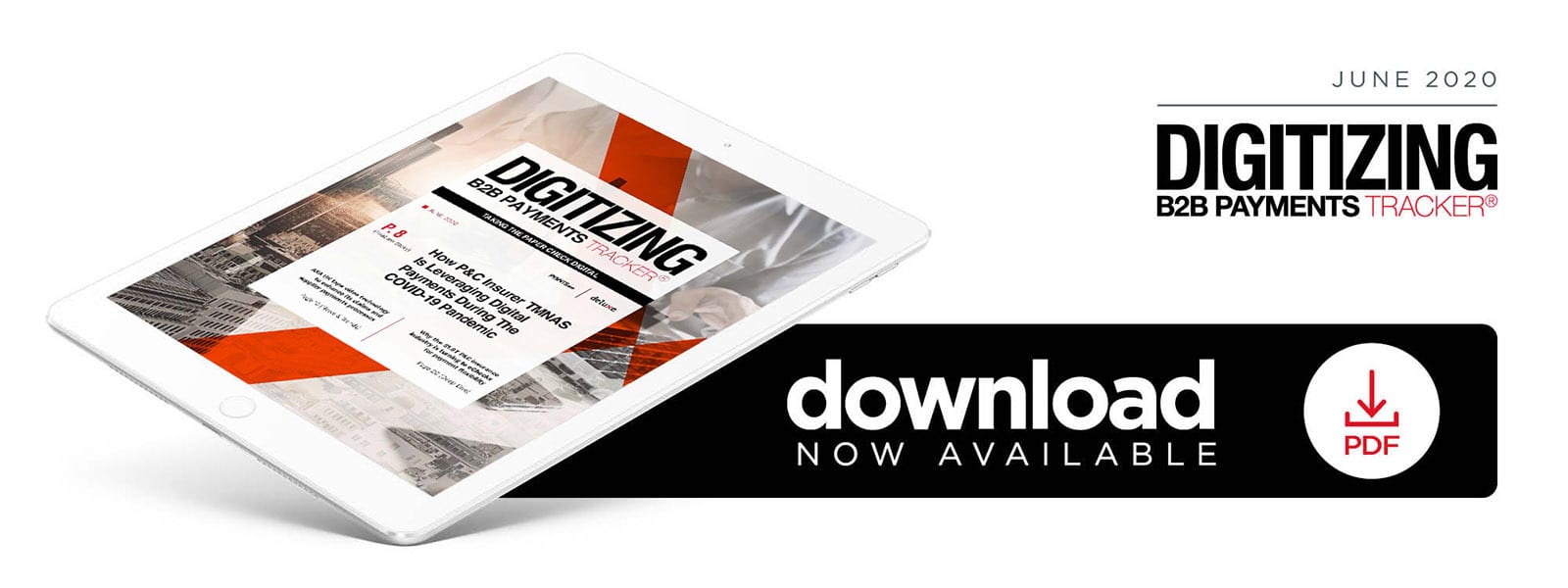Deep Dive: Why The $1.6T P&C Insurance Industry Is Turning To eChecks For Payment Flexibility

Property and casualty (P&C) is a massive insurance segment that includes auto, home, renters and powersports, among other subcategories. It represented $1.6 trillion in premiums for 2018, according to one recent report, a notable portion of the wider industry’s approximately $5 trillion in revenue that year. That size and variety means P&C is responsible for finalizing thousands if not millions of annual claims to consumers, businesses and vendors.
Insurance, much like the banking industry, routinely handles some of the largest and most sensitive payments. Both industries are also caught up in similar innovation cycles as they seek to enhance these payments, with each attempting to upgrade legacy systems to keep up with today’s global digital economy. Today’s policyholders are much more tech-savvy and use digital solutions in much of their daily lives, meaning insurers must find innovative ways to send funds.
Insurers still face a gap between what they can offer and what their clients expect, however. Legacy payment systems rely heavily on paper-based methods, such as physical checks, which make it difficult for insurers to keep up with growing transaction volumes. Paper checks also create wait times that may not be feasible for policyholders, especially as emphasis shifts toward giving them options in how they receive their funds.
Claimants are now requesting access to digital tools and payments from their insurers, and they are likely to abandon relationships with these entities if such solutions are not provided. Insurers must therefore work to digitize their claims experiences. The following Deep Dive will examine the P&C insurance industry’s payment innovation barriers, policyholders’ changing expectations and how emerging methods like eChecks can provide the necessary speed and flexibility.
Inflexibility, P&C And Payments
The P&C industry is vast and complex, though its insurers typically specialize in select categories under its banner. They might offer just home and auto insurance, for example, or only craft policies for businesses wishing to insure storefronts or commercial goods. The latter are responsible for fulfilling outbound payments to claimants when their business properties or vehicles experience damage, for example, facilitating payments to contractors for repairs or materials.
Paying claimants as quickly as possible has always been integral to insurance operations, but it has gained importance in recent years as the P&C industry swelled to new financial heights. The space recorded a 66 percent increase in net income, hitting $60 billion in 2018, for example, and the first half of 2019 saw individual insurer Lloyd’s report a $2.8 billion profit. The need to easily manage those payments means experimentation with emerging payment methods is ongoing, with interest in ACH, eCheck and debit or credit card payments expanding as policyholders start to see their FIs offer digital tools.
Paper checks remain the primary payment method for insurance claims, however, and will likely continue to play a large role for years to come. Recent PYMNTS research found that 52.1 percent of insurance claims disbursements were made via checks, for example. Just 10.9 percent of 2018 claims were paid out using instant payment methods, which may suggest insurers are still making up their minds about which online payment methods can serve their clients’ needs.
Checks are still the primary payment method for claims, but many insurers experience friction when issuing these paper-based payments without the availability of alternative methods. Fifty-five percent of insurance policyholders believe it is important to have choices regarding how they receive funds, yet 57 percent of those who received at least one P&C payment in the 12 months prior to the study said they did not have options. PYMNTS’ research also found that 30.1 percent of those surveyed would like to receive claim payments via instant payment methods. This is where eChecks come into play.
eChecks And The Need For Speed
eChecks are attached to companies’ checking accounts and sent using recipients’ bank routing numbers and ACH payment systems to push funds from one account to another. They provide benefits such as increased processing speeds to businesses that need the same capabilities from insurance payouts that they receive in bank transactions, especially as ACH payment volumes grow. One billion B2B ACH payments were reported for Q4 2019, for example, representing a 12.6 percent increase from the previous quarter.
P&C insurers are familiar with paper checks, making eChecks easy to transition to. The payment method allows insurers to send payments through digital means in a comfortable format for small and medium-sized businesses (SMBs) while also satisfying the growing need for flexibility regarding payment terms or speeds. Their electronic nature means they can be more easily attached to digital invoices, which hold information automated programs can fill in, as opposed to the manual input paper checks require. This saves P&C insurers both time and resources while also cutting issues caused by human error.
Speed and digitization are not eChecks’ only benefits for the P&C insurance sector, however. The method also adds a layer of security to insurers’ payment processes because they do not require companies to store sensitive account or banking information, unlike paper checks. Storing banking information for paper check processing in-house can prove to be a security risk, as bad actors could gain access to many companies’ sensitive details if they are able to infiltrate insurers’ payment systems.
B2B firms appear to be growing aware of eChecks’ ability to increase the processing and fund receipt speeds businesses now crave, and the technology does so without sacrificing security. The insurance industry may thus find the method more and more suited to its clients’ payment needs as it continues to move from paper to digital. Implementing eChecks could help insurers stay one step ahead of the competition and craft loyal relationships with their business clients and vendors.

